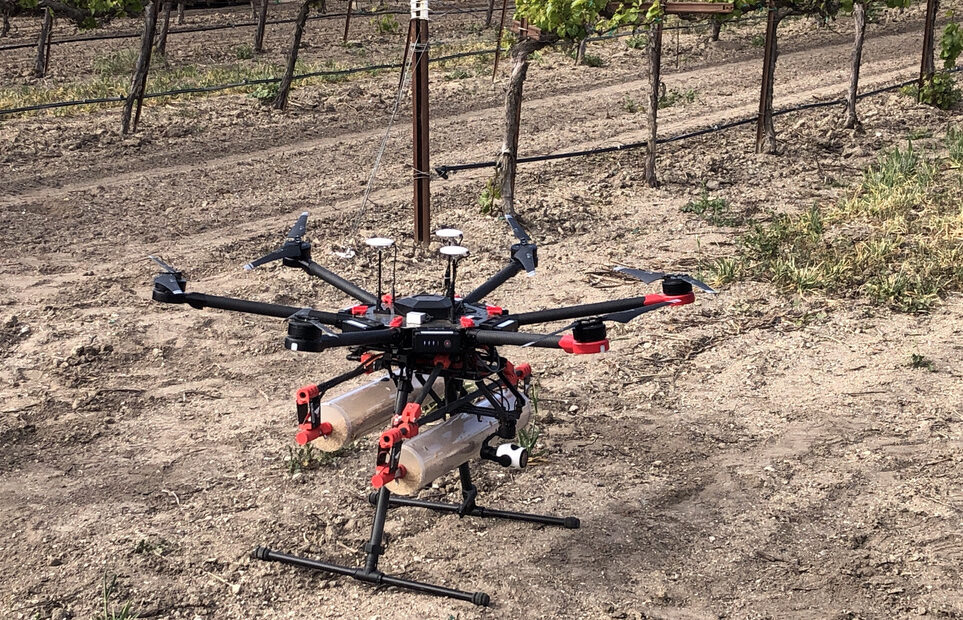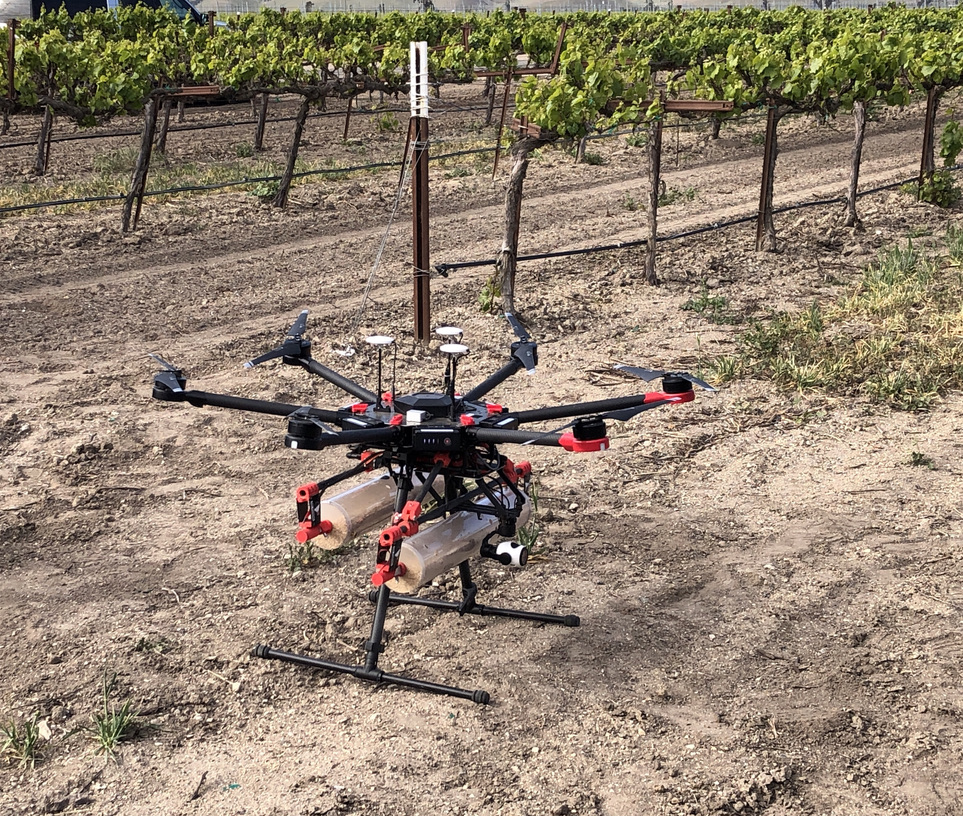
Drone Technology, Sustainability Key To Grape And Wine Research In Washington For 2022
Listen
Correspondent Lauren Paterson reports on projects planned for the Washington State Wine Commission. (Runtime 1:10)
Read
One of the projects funded by the Washington Wine Commission involves releasing predator bugs by drone, in the hopes they’ll eat and control populations of pests harmful to vineyard growth.
“This is going to be sort of a one year, trial to see how this release works. And it helps reduce
your pesticide use, because you’re basically using good bugs to eat the bad bugs,” says Melissa Hansen, the research director of the Washington State Wine Commission.
Normally growers buy and sprinkle out bugs over the plants themselves. But, that’s labor intensive. Releasing bugs like lacewings and lady beetles via drone would reduce the human labor needed. And using bugs to control vineyard pests is a more sustainable approach than
spraying with harmful chemicals.
Hansen says the commission is working toward a third party audit system so Washington vineyards can prove they’re committed to sustainable growing practices.
“Research is a part of making sure that this new program works for the industry. So it takes into
account our issues, our soils, our conditions – it’s being tailor made for
Washington,” she says.
They’re even designing a special sustainability label for wineries who want to display it on the bottle.
















